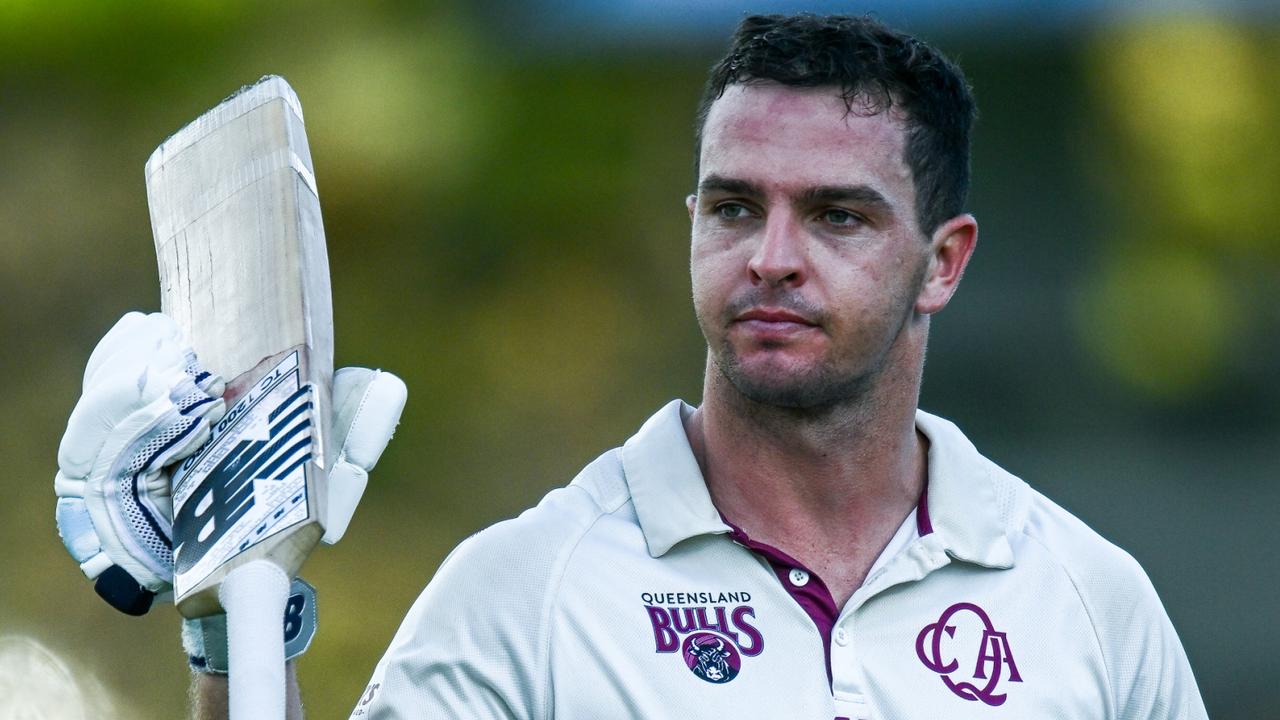Artist Blak Douglas shares story behind Archibald Prize portrait
The Indigenous artist who won the Archibald Prize this year has revealed the truth behind his portrait.
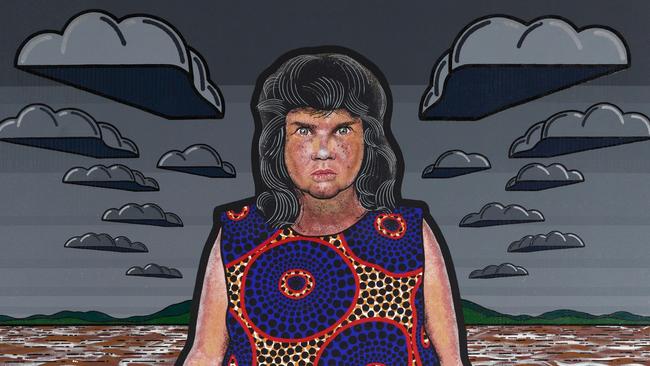
Sydney-based artist Blak Douglas has won the Archibald Prize for his portrait of Wiradjuri woman Karla Dickens in the Lismore floods, becoming just the second Indigenous person to take out the coveted award.
Douglas, who has Dhungatti heritage, was awarded $100,000 for his piece titled Moby Dickens – the first time a portrait of an Aboriginal woman has won the prize.
“I’m elated to be the first NSW First Nations artist to have won with a painting of a NSW First Nations artist. It’s a major historic win,” he said.
“It just happens that I was there in Lismore immediately after the first deluge in January and saw the shock and horror on people’s faces.
“Karla had just reached a pivotal point in her career ... when she should have ordinarily been excited about where her career was going, she was harbouring three families in Lismore as part of her own rescue mission.”
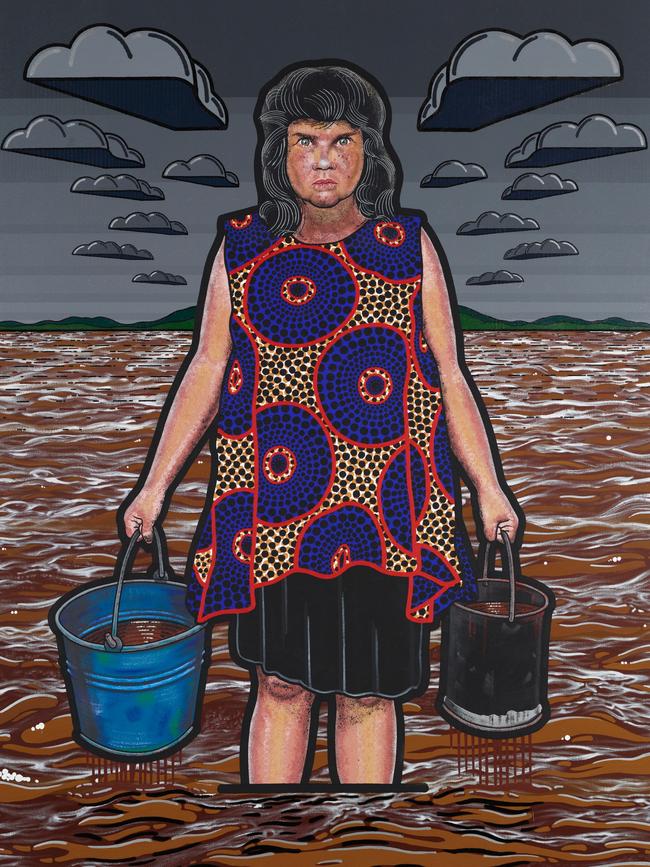
The five-time Archibald Prize finalist had the largest painting, measuring 3m by 2m, and its title references the 1851 novel Moby Dick by Herman Melville.
“Karla is Moby – a strong, prized figure pursued by foreign combatants,” Douglas said.
Fourteen clouds in the painting represent the number of days and nights that the first deluge lasted, and Douglas said the story of Noah’s Ark came to mind.
Born Adam Hill, he said all of his portraits made up for lost ground “in the failure to memorialise First Nations people”.
“In the past, I’ve considered each entry to the Archibald Prize a memorial to that individual and that’s why I only paint First Nations people,” he said.
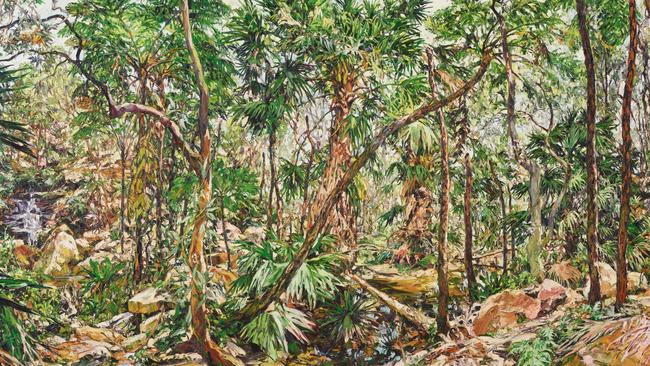
Dickens said she was “over the moon” for her dear friend and “brother in art”.
“Moby Dickens is a grumpy white sperm whale in muddy water ready to rip the leg off any fool with a harpoon who dares come too close,” she said.
“His painting not only has an incredible likeness to me and my mood in the last three months, but this killer work pays homage to each and every person who has found themselves knee deep in mud, physically, emotionally, mentally and financially after the natural disaster that has destroyed so many lives in the Northern Rivers of NSW and beyond.”
Western Aranda artist Vincent Namatjira (2020) is the only other Aboriginal person to have won the Archibald Prize in its 101-year history.
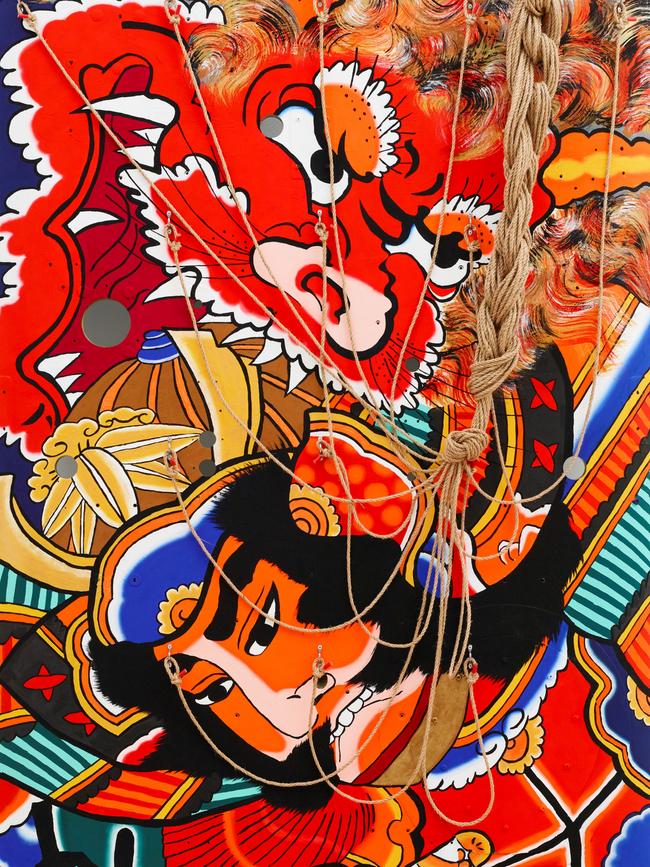
Nicholas Harding won the Wynne Prize for his landscape painting Eora, which is a confluence of landscape around Narrabeen Lakes on Sydney’s northern beaches and the Sailors Bay walk on Sydney Harbour.
‘‘Eora was the word used by Aboriginal people of Sydney to describe where they came from when asked by the British invaders what the place of first settlement was called,” he said.
Claire Healy and Sean Cordeiro won the Sulman Prize for their work Raiko and Shuten-dōji, a depiction of the fight between Japanese warrior Raiko and the demon Shuten-dōji painted on the fuselage of a Vietnam War era helicopter.
An exhibition of all the finalists’ work will run from Saturday until August 28.


